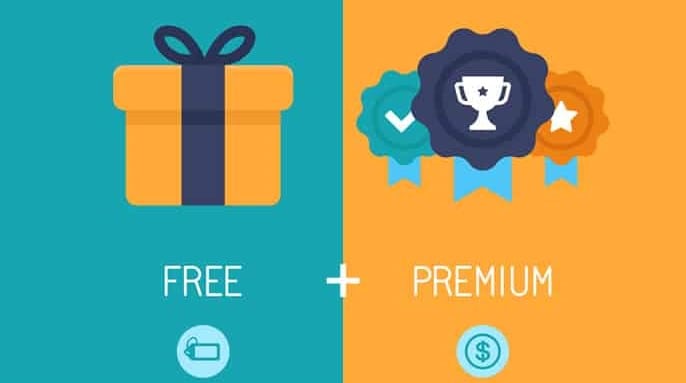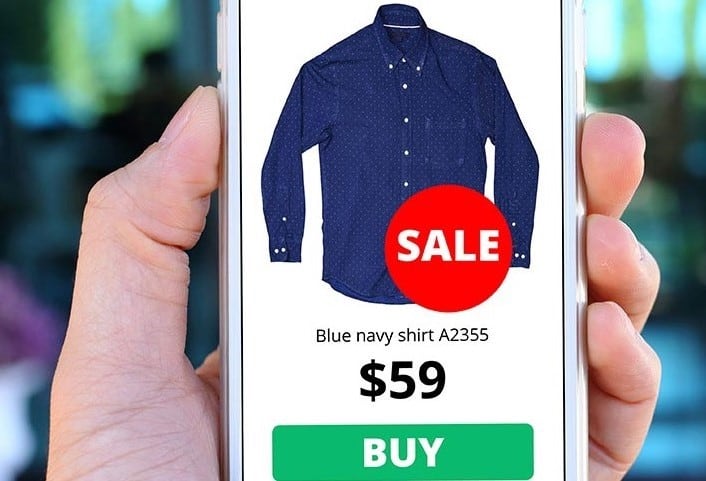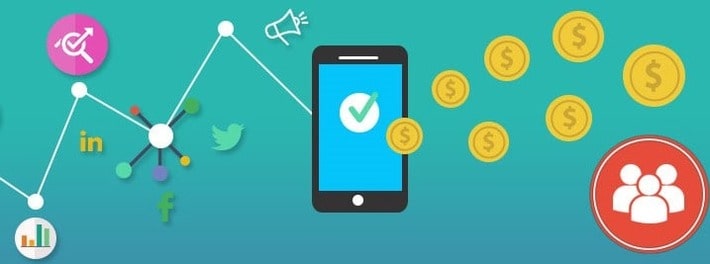
Top 5 Ways of App Monetization
Along with the growing usage of mobile devices, application market trends are spreading over every possible industry. Launching a mobile app, users enjoy, is the right way to making it a successful project. Before some people make a decision on choosing iOS vs Android mobile development, one of the most common and effective ways to succeed is to rely on mobile app monetization.
This article covers the following points:
1. What is Mobile App Monetization?
2. How to Monetize an App?
3. The Importance of Mobile App Monetization
4. The Importance of User Experience
5. Start Your Mobile App Monetization Today
Enjoy the reading!
What is Mobile App Monetization?
Before passing on the ways of monetizing, let’s define what it is.
App monetization is exactly what it sounds - making revenue through mobile applications. This is a good option to focus on taking into account the time people tend to spend on their smartphones. Have you ever thought about why top news publishers decide on launching an app and monetize it? The reason is obvious: there is a higher chance to reach a massive amount of potential customers, and it would be stupidity to miss these people.

I know, you may have concerns about how to monetize an app. You will think if you launch a paid application, nobody is going to install it from the store. That’s why I have made a list of ways on how you may successfully monetize your already available application.
If you don’t have it yet, you may start thinking about launching it. But, first of all, you will need to decide on creating a native vs cross-platform application. You may also get in touch with our professional mobile developers to share your ideas and discuss every concerning point. Do not miss your chance for a free consultation.
How to Monetize an App?
Wonder about how do apps make money? Today there are so many app monetization strategies that you may have thought about which of the following is a way for an advertiser to monetize their app? To choose this or that one, you need to shape a clear image of your user behavior on the app. But before, let’s understand these ways of monetizing apps.
#1 Paid Applications
This is the first point that comes to our mind when we think about app monetization. When the mobile application stores came to reality, the majority of applications were paid. This is the only way of app monetization. This is the model of monetization when the app is launched on the store and users have to pay in order to download it.

If you are a beginner and your application is new, this won’t be an effective way to start. You will just miss the potential users. However, if you have already generated a great number of loyal users you may use this strategy to make money. It will work, especially, if no competing free app is available in the market, or you have thought about creating an app that will bring a new culture. People like to pay for something unique and beneficial.
As the majority of people who consider app monetization don’t have such a popular app or they haven’t even launched one, paid apps strategy don’t have such a big chance to work effectively. So, the below-mentioned methods may provide better results.
#2 Freemium Apps
The word Freemium is a combination of Free + Premium. It means the users get a chance to install the app for free and make use of a limited amount of features. In order to have access to the premium features the users need to make in-app purchases. This strategy of app monetization is just similar to the free trial version of various web tools and platforms.

If you choose to use this method, you should analyze carefully and choose the features you offer for free and the ones that require payment. The research of the market will help you in this process. You may even offer more free features or charge a low cost rather than your competitors to gain more customers.
#3 In-App Purchases
If you want to know how do free apps make money, then this strategy is right for you. In-app purchases are more popular in mobile gaming apps (for instance, they may provide users with extra lives, in-game coins, power-ups, etc). On Apple App Store, we may come across apps that offer 4 different types of in-app purchases. These types are:
1. Consumable. May refer to gaining additional lives or passing the stages in games. For instance, users pay to go on playing when their game is already over.
2. Non-Consumable. This type is related to the required purchases when the user wants to expand the set of available features.
3. Auto-Renewable Subscription. This strategy refers to the purchase when the user subscribes to any service offered by the app and makes use of it for a specific period of time. This kind of subscription is automatically extended by Apple until the user cancels it.

4. Non-Renewing Subscription. In this case, the users pay and get access to the features for a fixed period. Once the time is out, they have to renew the subscription to continue using.
If you have an iOS app then a subscription may be a very effective way of monetization for you. Apple loves subscription apps, accordingly, the users are familiar with them and they use to subscribe to make use of valuable technologies.
#4 In-App Advertisements
These days advertisements are everywhere, in the streets, on social media and different websites, as well as in mobile applications. Perhaps, that’s why this type of monetization is considered to be the most popular among app owners. In-app advertisements may be in different formats. Below, I’ll present some of the most commons.
- Banner ads. Such ads are more common when the app has both a paid and free version. The free version usually contains advertising banners that users have to see. However, the fact that people prefer to pay in order not to see these banner ads arises a question. It seems banner ads are not so effective. They don’t provide engagement and advertisers need to pay more in order to display these ads on apps.
- Interstitial ads. This type of ad is very interactive. They are displayed on the full screen usually when the app is loading or when an action is completed. For instance when the game level is completed. The time is chosen, taking into account the user experience. These types of transition points and breaks give the users enough time to understand the advertising message, and the ad won’t be irritating.
- Native ads. Probably, this is the most effective type of advertisement. Usually, native ads provide a relatively higher engagement rate. These good results are not surprising as these ads share the same content scope as the media source, in this case, the application. For instance, the ad may be a video designed according to the app design and functions.

- Affiliate ads. In this way, the app owner generates a commission fee from other apps, services, or products through the in-app advertisement revenue. If your users trust your app they won’t be against being referred to another platform and making purchases.
- Reward ads. Have you ever happened to watch an advertising video to get some help or unlock a game level? It has been a reward ad. In this method of monetization, the users spend more time in the app in order to get a reward. As a result, the advertiser is satisfied as the ad gets impressions and sometimes even achieved goals, the user is satisfied with being awarded, and the app owner is glad to get a longer user experience time.
#5 Data Monetization
When users make use of your mobile application and take action, they generate a kind of data. This type of information may be easily analyzed, made anonymous, then quantified. Such data - known as Big Data, is used to form insight into customer behavior.
Big data is used for creating IoT technologies, smart cities, as well as for delivering better and more personalized advertisements to the users.
Today, the majority of the mobile app monetization strategies are based on merely delivering the advertising message to the end-users. But when we forgot about the user experience? Even if the app generates some revenue it will have no importance if the user experience is damaged.

Some people think that data monetization and similar ways of mobile app monetization is going to have a wider effect in the future. The reason is quite obvious. These types of big app revenue generators don’t have any negative influence on the user experience.
The Importance of Mobile App Monetization
These days, monetizing applications has become an essential point. The reason is that the majority of apps are available in the app stores for installation for free. People realize the importance of an app for business purposes. They launch an app that is free to install. So, there should be an alternative to develop the mobile app development model.
Mobile developers focus on ways to generate revenue after the app is downloaded. However, when choosing this or that type of monetization, take into account two important things:
✓ Generate revenue with the help of your app
✓ Pay attention to your app UX (user experience)
A lot of app owners forget about the UX and focus on revenue. However, any kind of app monetization revenue comes from engaged users. Make research and compare. Is the maximized revenue worthy enough to damage even the minimal user experience?
The Importance of User Experience
Have you ever thought about what the revenue requires? Do you guess? - Happy and satisfied users. Mostly, app monetization harms the user experience while the income from monetization is calculated based on the number of users. Accordingly, a higher number of happy users is equal to a better result of revenue.

On the other hand, the low level of user experience means missing a number of users, as a result, a decreasing value of revenue. This is what you are recommended to consider when choosing an app monetization strategy.
Start Your App Monetization Today
To start monetizing your mobile app you need to launch an app. At first, make it free (later you will better understand if your users will like to pay or not). Investment in a free application is a great decision. You know why? The return may be very profitable.
Pay attention to marketing. Increase your brand awareness. Let people know about the application. Make it easier for them to identify the benefits and find the solution for their problems in it. They say that a strong marketing strategy is the basis of a successful project. It may take time, but the good results do come neither immediately nor easily. So, be patient.

You may also create an MVP and let the potential audience check it out. MVP is a minimum viable product. So, you offer the minimum of your application that is enough for user experience and let people test it. This is a very effective way to provide the required features and quality. On the other hand, you shape a clear opinion about whether or not people like your upcoming app or it doesn’t attract people enough.
Use the monetization strategy, when the application is already available in the stores so that you may have available sales.
The Main Takeaways. Now we may come to the conclusion that there is much to do in behind of a free mobile application. Even if it is free, it does not mean there is no chance to make money with the help of this app. In fact, free apps offer some chances of a higher income throughout the time, than the paid ones that just require a solid price to download. So, start your free up today to get further income tomorrow!

Article by:
Vera Mirzoyan
Published on:
December 16, 2020
Last updated on:
September 01, 2021


